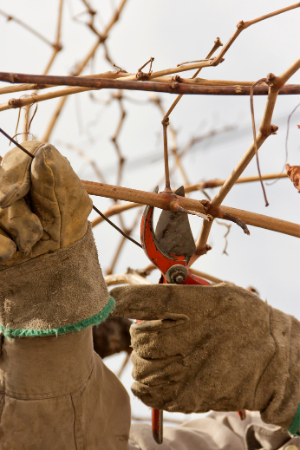Winter pruning

Winter is the perfect time to prune most woody, deciduous plants. With the leaves gone it is easier to see all of the branches and to determine what should be removed. When the plant is actively growing, there is the chance that it will experience some shock as pruning removes food-producing leaves at a time when the plant is feeding itself. In the winter, since the plant is dormant, this is not an issue.
Before you put your pruners to work, you need to do a bit of planning. The first thing to consider is the plant itself. A quick check at one of the many botanical garden or university horticulture sites will give you the mature size, spread, and shape that the plant’s DNA says it wants to achieve. Keep in mind that the plant is working hard to get to that point. If you are pruning a shrub that matures at 8’ height and 12’ spread to fit into a 4’x4’ space, you might want to reconsider. Every time you prune this plant back to the smaller size, it will push back once it starts growing again. A better choice might be to remove the plant and replace it with one that will not outgrow the space.
Here are a few quick pointers to keep in mind when pruning:
•Know the plant, as stated above. Prune to encourage it to reach its predetermined shape and size. Step back and review your work and your end-goal often while pruning.
•Prune out any broken branches or branches that are rubbing on another branch.
•Prune to allow light and air to reach the interior of the plant.
•Always make clean cuts (using sharp pruners) and cut just above a node. A node is the spot where a twig is attached to a branch or a leaf or bud is attached to a twig.
•If removing a branch, look for the branch collar (a swollen area at the point of attachment). Make your cut just outside the branch collar. This will allow the tree to heal quickly and cleanly.
•Choose your pruning tools wisely. Hand pruners are good for twigs up to about one-half inch. Loppers are the next step, for twigs and small branches up to an inch. A small folding hand saw will work well on branches that are too big for loppers. Large branches require a larger hand saw with a curved blade or a chain saw. Whatever tool or tools you are using, make sure the cutting blades are sharp. Clean cuts heal faster and offer fewer opportunities for disease and insects to enter.
Provided information and photo

